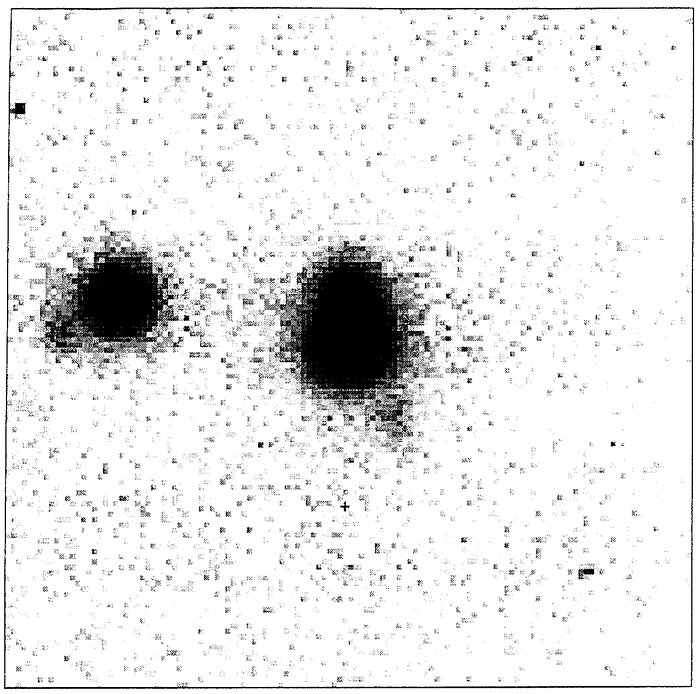Brightest known double quasar
The newly discovered 16-magnitude double quasar HE 1104-1805 AB is the object at the centre of this CCD image, obtained by Dieter Reimers and collaborators at the ESO New Technology Telescope on May 11, 1993. Component A is the brighter of the two (lower) and B is the fainter (upper). The distance between the two objects is 3.0 arcseconds. This image is a composite of three 200-second exposures through a red filtre. The seeing conditions were mediocre.
The bright object to the left is probably a galactic star. The diffuse, faint object which is seen South-West (below and right) of the quasar is a 21-magnitude galaxy. It is. too far away to be the "lensing" galaxy which·may have caused the splitting of the quasar image. It may be a member of a distant cluster of galaxies of which another is just South-East of the stellar image.
The pixel size is 0.4 arcseconds. North is up and East is to the left
ESO
About the Image
| Id: | eso9304a |
| Type: | Observation |
| Release date: | 3 June 1993 |
| Related releases: | eso9304 |
| Size: | 1887 x 1872 px |
About the Object
| Name: | HE 1104-1805 |
| Type: | Early Universe : Galaxy : Type : Gravitationally Lensed Early Universe : Galaxy : Activity : AGN : Quasar |
| Distance: | z=2.319 (redshift) |
| Constellation: | Crater |
| Category: | Quasars and Black Holes |
Coordinates
| Position (RA): | 11 6 33.40 |
| Position (Dec): | -18° 21' 24.30" |
